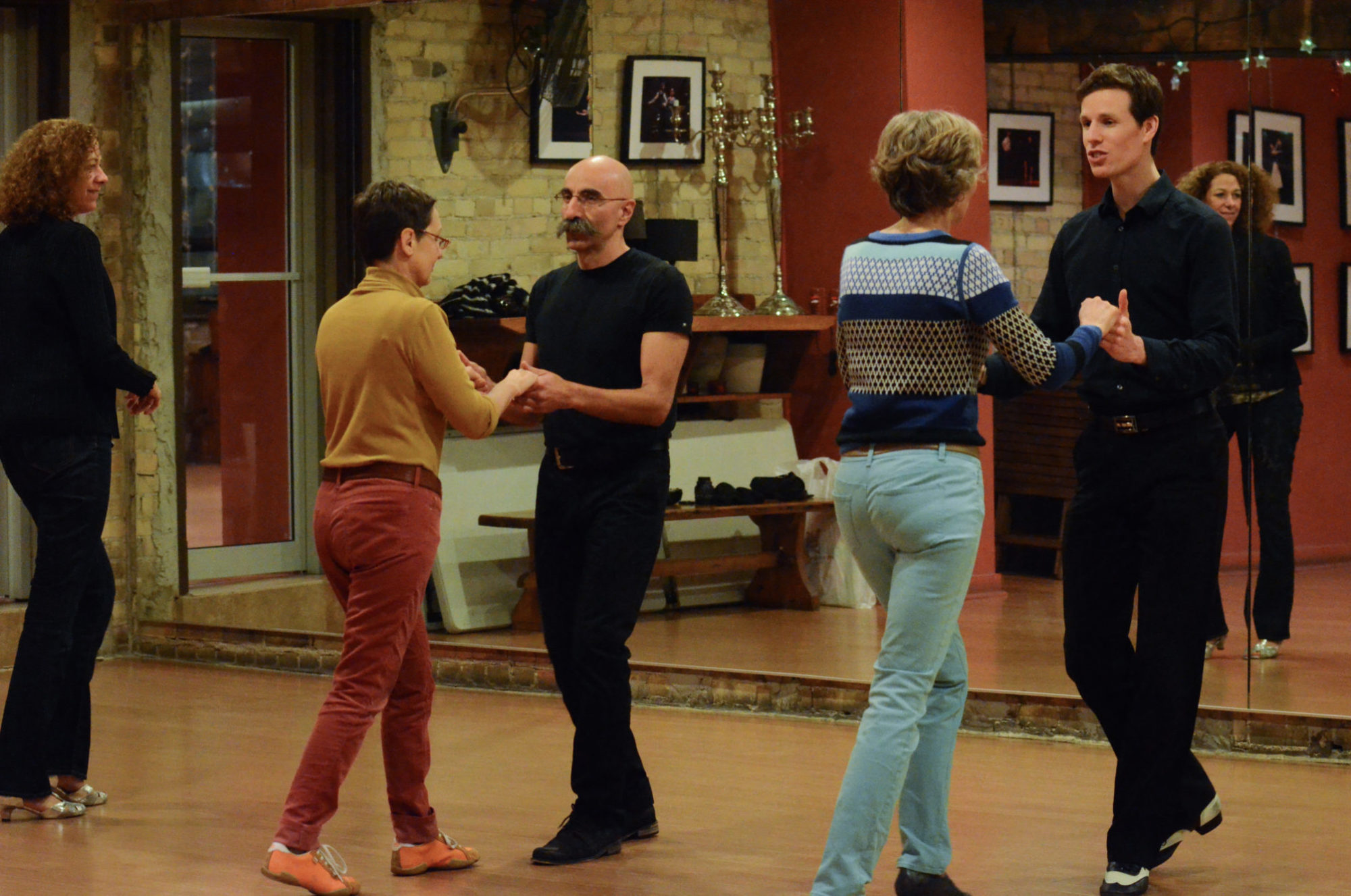So now that you’ve started to build your dance repertoire, you might notice that you’re actually starting to get ‘danced out’. You watch with envy those guys and gals who seem to be able to shake it non-stop - and they’re still there when you’re packing up your shoes. How can you raise your dance stamina to keep up?
There’s two quick answers: improve your physical fitness, and improve your dance efficiency.
 We are talking about dance stamina, which is very different from strength. The latter requires a very different approach.
We are talking about dance stamina, which is very different from strength. The latter requires a very different approach.
1. Practice!
I can hear your groans from here 🙂 But it’s true - if you want to build your endurance, practicing your steps at the intensity that tires you regularly will allow you to do it longer and longer - and naturally you’ll get better at the steps as well.
Pic of muscles: ‘Also, this looks nice.’
 Make sure you pace yourself. The fastest way to improve is to set an intensity that stops short of pulling muscles or frustrating yourself.
Make sure you pace yourself. The fastest way to improve is to set an intensity that stops short of pulling muscles or frustrating yourself.
2. Less is more
Most dancers start out doing everything too much: too much hips, too much arm styling, too much turning… You get the idea. All that extra energy just drains your dance stamina, and throws off your partner as well. See if you can relax your body a little more, do a little less, and still move with your partner.
3. Consider a dance fitness class
Many studios teach dance classes that focus on burning calories. For example, Joy of Dance teaches Zumba, Nia, and Ginga classes, which vary in their intensity. You might even try a style like capoera that can’t help but strengthen your body simply because it’s the nature of the dance.
4. Hang From the Joints
Try this: position yourself in a dance frame with an imaginary partner.
Now, relax as much as you can without loosing the frame. You’ll find it a lot easier to hold the position, while spending a minimal amount of energy holding your body at the right angles. Practice dancing like this, alone and with a partner, to keep soft and save your dance stamina.
5. Fill the Music
In ballroom, movements should be spread out to fill each beat. For instance, if you begin a waltz reverse turn by rotating your body, hips and feet leftward on count 1, if will be MUCH easier to complete the turn on steps 2, 3. It’s a smoother lead too, which will score you more dance partners.
Other movements, like open breaks or contra checks, can save dance stamina if the lead is initiated a fraction of a second earlier - it’s all about being comfortable enough with your steps to anticipate the action just before it happens.
 I’m not giving followers permission to back-lead here. But be ready for these subtle lead changes, and you will work with your partner - not against him.
I’m not giving followers permission to back-lead here. But be ready for these subtle lead changes, and you will work with your partner - not against him.

 We are talking about dance stamina, which is very different from strength. The latter requires a very different approach.
We are talking about dance stamina, which is very different from strength. The latter requires a very different approach. Make sure you pace yourself. The fastest way to improve is to set an intensity that stops short of pulling muscles or frustrating yourself.
Make sure you pace yourself. The fastest way to improve is to set an intensity that stops short of pulling muscles or frustrating yourself.